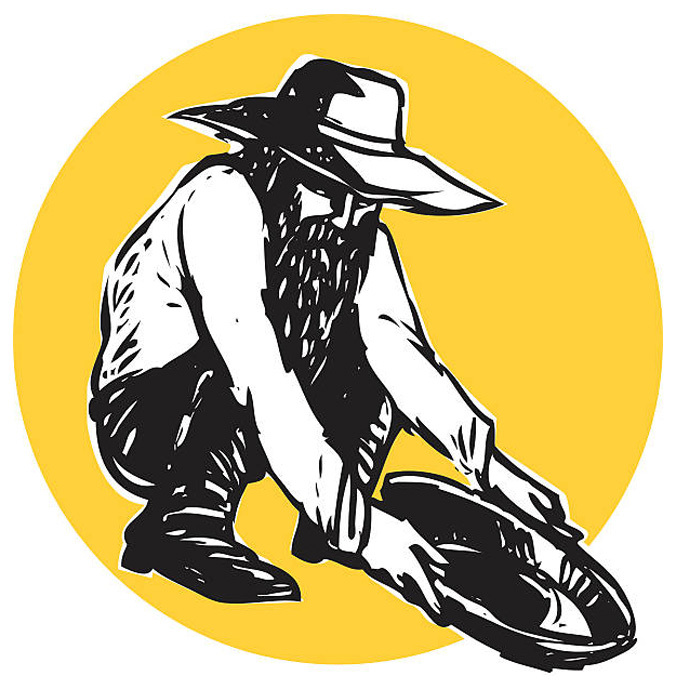
Ashcroft served as a transportation hub during the Cariboo Gold Rush and served as Mile 0 for the road to the Cariboo goldfields and the BC Express Company (Stagecoach) was based here.
The British Columbia’s Cariboo Gold Rush is actually considered the most famous gold rush, though the Frazer River Gold Rush seems to get more attention though years earlier. Cariboo Gold Rush began in the isolated Cariboo Mountains region once the word spread, 10s of thousand flocked to the region.
Miners’ quest for gold and dreams of “striking it rich”, it was common for small cabins built near their claims to ward off claim jumpers and thieves, often built from logs, such as the one displayed. Gold miners lived a rough and dirty lives and their cabins were sparsely furnished and often made themselves from saplings. Most importantly, the cabins protected the meager contents of their backpacks, and protected them from the elements. Gold rushes never lasted long, leaving abandoned mines, cabins and ghost towns all over the remote Cariboo region.
Nomadic Times sign is located on the front door of the Miners' Cabin and explains how life changed for First Nations throughout the region when European and Chinese arrived in the area. During the Cariboo Gold Rush and the large influx of miners to the area had a dramatic impact on their nomadic life style.
This replica of a typical Miners' Cabin was constructed in 1999 and by Ashcroft community members. Near the cabin is a functioning water wheel, BX loading dock and the Visitor Centre.
NOMADIC TIMES
Go back 150 Years. The Gold Rush is still a few years away. The American, European & Chinese adventurers have yet to be lured to the northern gold fields. The First Nations Peoples carry on with their nomadic way of life as they have done for centuries. They go where the fish are, or move on to richer hunting grounds. Sometimes they build pit houses for ceremonial purposes or give them good protection against the winter harshness. Sometimes they erect temporary encampments.
Then gold is discovered in those creeks up north. The large influx of gold seekers and packers into the area deeply affects the Indian's traditional life patterns. A shortage of white women among the miners means that a lot of Indian women are taken as wives or housekeepers by the newcomers. As ranching establishes itself in the area, many Indian males become cowboys or handlers of horses. Some show great skills at horse riding and become famous rodeo riders. This sort of interaction with the white man effectively put an end to their life the nomadic life and changes their life style forever.
Transcribed from sign
|
HERITAGE PLACE |
|
Constructed in 1999 by: |
|
|
Wade Eaton |
Keith Monford |
|
Jayne Jeyes |
Jay Paquette |
|
Owen Johnson |
Greg Petty |
|
Jason Leclair |
Jack Wong |
|
Co-0rdinator: |
Rev. Jim White |
A YOUTH SERVICE CANADA PROJECT |
"Heritage Place Park
A relaxing treed green space that honors the heritage of Ashcroft residents. This gem is in the downtown business area is nestled between the village Visitor Centre and the Harmony Bell Monument. Features of the park include: a waterwheel, a historic sod roofed cabin, a gazebo for performances, a caboose, a trail with benches and a picnic area for families to enjoy. Communities in Bloom works along side the Village Public Works crew to keep this area beautiful.
"Source: Ashcroft